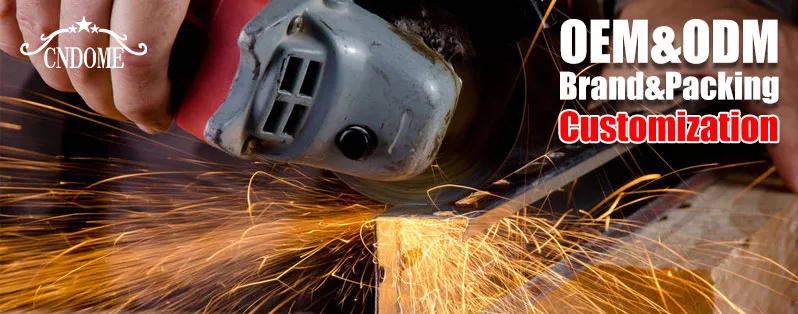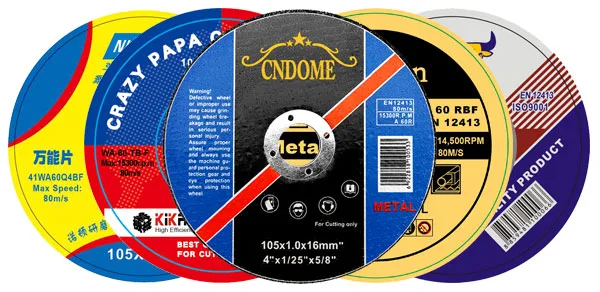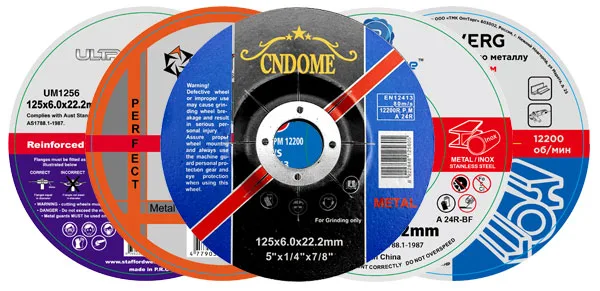Grinding wheels are indispensable tools in various industries, serving as the driving force behind the precision and efficiency of material removal processes. Understanding the specifications of grinding wheels is crucial for achieving optimal performance and ensuring safety in grinding operations. In this blog post, we will delve into the key specifications that define grinding wheels, shedding light on their significance and impact on machining applications.
Abrasive Material: The Heart of Grinding Wheels
The choice of abrasive material significantly influences a grinding wheel’s performance. Common abrasive materials include aluminum oxide, silicon carbide, diamond, and cubic boron nitride (CBN). Each material possesses unique characteristics, determining the wheel’s suitability for specific tasks. For instance, aluminum oxide excels in general-purpose grinding, while diamond and CBN are preferred for hard and high-speed machining applications.
Grit Size: The Measure of Fineness
Grit size is a crucial factor that defines the coarseness or fineness of the abrasive particles embedded in the grinding wheel. Expressed numerically, the grit size indicates the number of abrasive particles per square inch. Lower grit numbers represent coarse abrasives suitable for rapid material removal, while higher grit numbers signify finer abrasives for precision grinding and surface finishing.
Bonding Material: Holding It All Together
The bonding material acts as the glue that holds the abrasive grains in place. Common bonding materials include vitrified, resin, rubber, and metal. Vitrified bonds offer excellent rigidity and are suitable for heavy-duty grinding, while resin bonds provide flexibility for intricate work. Understanding the characteristics of different bonding materials is crucial for selecting the right grinding wheel for specific applications.
Wheel Structure: Determining Density and Porosity
Wheel structure refers to the arrangement of abrasive grains and bonding material within the grinding wheel. It influences the wheel’s density and porosity, impacting factors such as chip clearance, heat dissipation, and material removal rates. Open structures are suitable for cool cutting and reduced heat generation, while dense structures are preferred for heavy-duty applications.
Wheel Grade: Balancing Hardness and Toughness
Wheel grade indicates the hardness of the grinding wheel, affecting its ability to resist wear and deformation during use. Higher-grade wheels are harder and more suitable for precision grinding, while lower-grade wheels offer enhanced toughness for heavy material removal. Balancing hardness and toughness is essential for achieving optimal performance and wheel longevity.
Wheel Shape and Size: Tailoring to the Task
Grinding wheels are available in various shapes and sizes, each designed for specific grinding applications. Common shapes include straight, tapered, and cup wheels, catering to flat surfaces, external or internal cylindrical grinding, and tool sharpening. Selecting the right wheel shape and size is crucial for achieving desired results and maintaining dimensional accuracy.
Conclusion:
Grinding wheels are precision tools that play a vital role in shaping the modern manufacturing landscape. Understanding the specifications of grinding wheels is essential for choosing the right tool for the job, optimizing performance, and ensuring workplace safety. By considering factors such as abrasive material, grit size, bonding material, wheel structure, grade, and shape, manufacturers can harness the full potential of grinding wheels in their machining processes. As technology advances, innovations in grinding wheel specifications continue to push the boundaries of what is achievable in the world of material removal and surface finishing.



